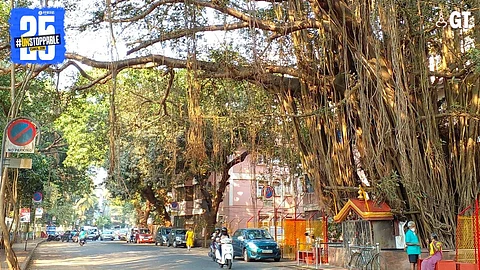

In addition to the many coconut trees that are synonymous with Goa, there are several other tree species commonly found across the state.
Over the past year in Goa, we have seen numerous occasions where people took to the road to save trees — whether it was in Siolim last March or in St Inez last April or the current news of the cutting and translocating of the old banyan tree of Khapreshwar Devasthan, at Porvorim, which is commonly known as Voddakodden (near the banyan tree).
For Goans, these are not just trees, but part of their religion, rituals, and culture. These trees — mainly ficus trees, like peepal (Ficus religiosa), audumbar (Ficus racemosa) — and especially the banyan tree (Ficus benghalensis), have a lot of cultural significance.
CULTURAL CONNECT
The banyan tree is one of the most common and highly revered ficus trees in India, and is in fact, the national tree of India.
Every June, the festival of Vat Savitri, also known as Vat Poornima, is celebrated, where married Hindu women worship the tree by tying a cotton thread around its trunk and praying for the long life of their husbands.
This celebration is based on the legend of Savitri and Satyavan, where Savitri wins an argument with the god, Yama, ultimately bringing her husband back to life. It is believed that he died under this tree, and that is the reason why this tree is venerated.
In Panjim city, two notable roadside shrines are situated beneath a banyan tree — one near the city mall at St Inez, and dedicated to Lord Shiva; and the other at Campal on DB Road.
The best example of a banyan tree is at the temple complex of Jeevottam Partagali Math, at Poinguinim, Canacona.
The entire area is shaded by this tree, making it hard to identify the source or the mother tree. It looks like a forest due to this one tree and the various branches growing from its aerial roots.
ROLE IN NATURE
One may wonder why our ancestors thought of worshipping these ficus trees. Unlike other trees, ficus do not have any attractive flowers or edible fruits. However, the figs of these trees attract bees, birds like the Malabar grey Hornbill (endemic to the Western Ghats) and a particular species of fig wasps.
Research has shown that every species of ficus (there are hundreds of ficus species) has a unique fig wasp pollinator and they pollinate these flowers, which are found inside the figs. The pollination process happens inside the figs, which is a false fruit and it is filled with flowers.
After pollination, a female wasp enters a fig, lays her eggs, and dies inside the fig. When these eggs mature, the female wasps mate with male wasps, and after that, the males die within the fig.
Next, the female wasp (which is born with wings unlike male wasps) travels outside the fig with pollen on its wings, in search of another ficus tree of the same species, and thus completes the reproductive cycle.
This is indeed one of the most fascinating, and complex reproductive processes in nature. The bond between wasps and ficus trees is unique, and any threat to either can disrupt the ecosystem, as these trees support numerous species, including birds, butterflies, squirrels, bats and monkeys.
A banyan tree can grow upto 30 m in height, and is quite a resilient tree. It is actually an epiphyte that begins life by growing on other trees and eventually strangles the host tree as it spreads its roots and continues to grow.
Such is the diverse world of ficus trees, and especially banyan trees which are so commonly found in Goa that we sometimes fail to notice their uniqueness. Unfortunately, these majestic trees are being bulldozed due to road widening and real estate development.
In reality, we need these trees now more than ever before. Currently, as we face rapid urbanisation resulting in heat waves and heat islands even in the State of Goa, having such trees is no less than a blessing.
They offer dense shade, and can absorb around 540 kg of carbon per year. Thus, they are a necessity in this era of climate catastrophes.
These are likely the reasons why our ancestors held this tree in reverence. To truly appreciate its importance, simply stand under a banyan tree today and observe how it nurtures life.